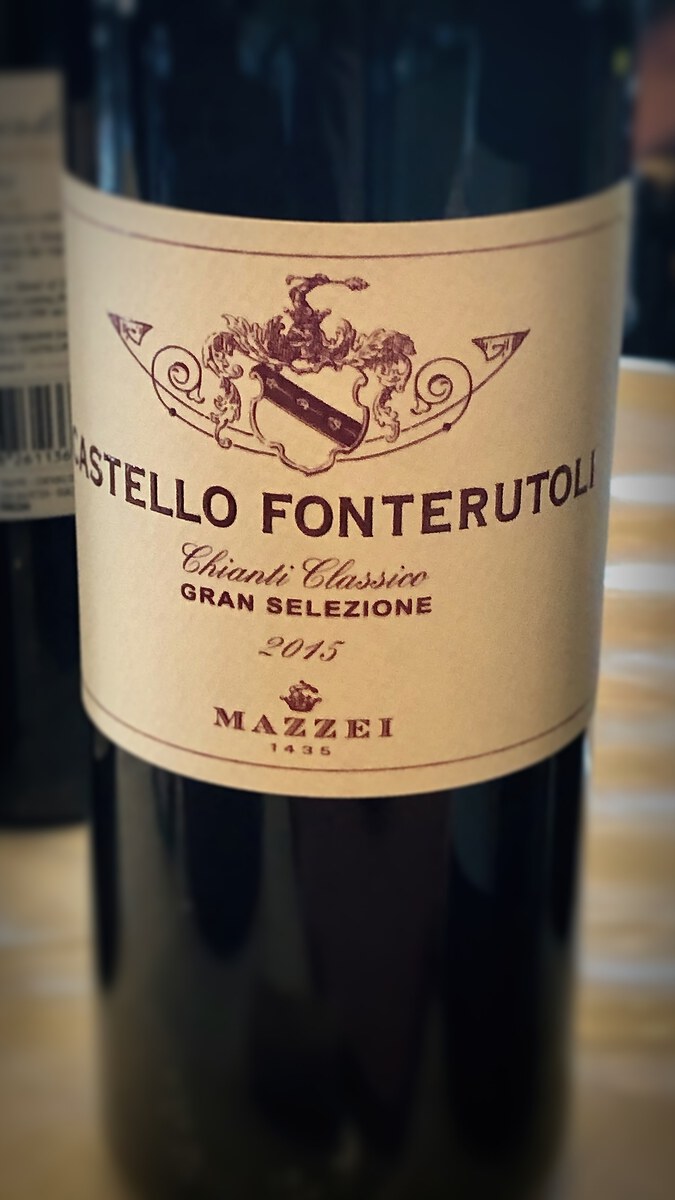Castello Fonterutoli "Gran Selezione DOCG" 2015
Blend of Sangiovese / Malvasia Nera / ColorinoWell integrated tannins. Fruity and floral with a hint of spice.
Tasting Notes
The 2015 Gran Selezione DOCG from Castello Fonterutoli is ruby red in the glass.
The bouquet shows mellow notes; fruity, floral and ever so slightly spicy.
The tannins are there but are well integrated.
This bottle would improve with 6 to 8 years in the cellar.

|
|
Castello Fonterutoli |
|
|
Gran Selezione DOCG |
|
|
Red & Still |
|
|
Italy |
|
|
Toscana |
|
|
Sangiovese, Malvasia Nera, Colorino |
|
|
2015 |
|
|
Learn more
Sangiovese
Wine making grape
Sangiovese is a red Italian wine grape variety named after the Latin sanguis Jovis, which means “Jupiter’s blood.” Though it is native to most of central Italy, from Romagna to Lazio, Campania, and Sicily, it is best known outside of Italy as the sole component of Brunello di Montalcino and Rosso di Montalcino, as well as the primary component of the blends Chianti, Carmignano, Vino Nobile di Montepulciano, and Morellino di Scansano, though it can also be used to make varietal wines like Sangiovese di Romagna
Link to here... | Derived from 'Sangiovese' on WikipediaColorino
Varietal
In Tuscany, the Colorino grape variety is the most commonly grown. The grape is noted for its dark color and is commonly used as a coloring agent in red blends. Because of its obsession with and use of the governo winemaking method, it played a minor role in Chianti’s history. Colorino, like Canaiolo, did not rot easily when partially dried before being added to fermenting grape must. The grape, however, did not have the same amount of fruit or softening effect as Canaiolo, and it fell out of favor. Tuscan winemakers became more involved in the variety in the late 1980s, seeing parallels between it and the part Petit Verdot plays in Bordeaux blends. Colorino was planted to provide darker colors and structure from phenolic compounds in the thick skin of the grape, but without the overpowering aromatics of Cabernet Sauvignon. The resurgence of Colorino was short-lived, and by the turn of the century, it had returned to a minor position in Tuscan wines.
Link to here... | Derived from 'Colorino' on Wikipedia
